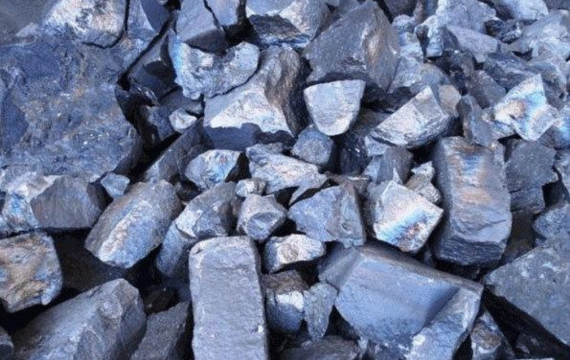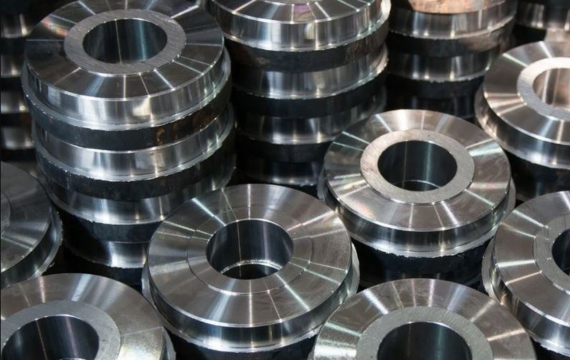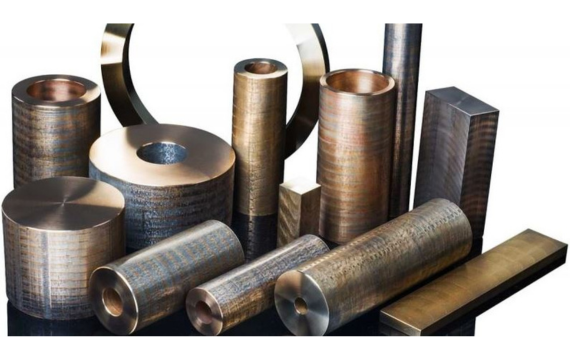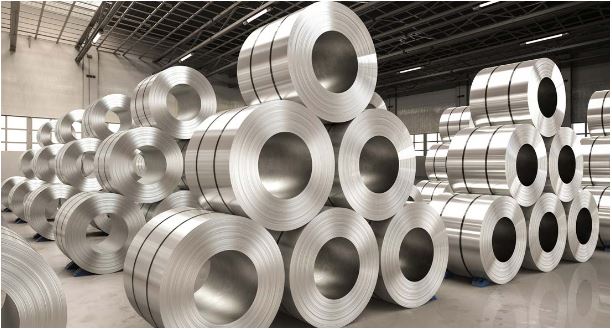Ever wondered what makes steel so strong and versatile? The secret lies in manganese alloy. Its special composition and characteristics make it an important part of many industries.
In this blog-post, we’ll look at the composition, properties, types, benefits and uses of manganese alloy. By the end, you’ll have a complete understanding of this key material and why it’s so important in today’s world.
What are Manganese Alloys?

Manganese alloys combine manganese with other metals, mostly iron. These alloys usually have 60-95% manganese content by weight. They’re key additives in making steel because they improve steel’s strength and wear resistance. Manganese alloys increase steel’s tensile strength by up to 30% which reaches 1000-1200 MPa in high-strength uses. They also raise hardenability and lessen formation of iron sulfides. This can make steel brittle. In non-iron applications, manganese alloys help in better corrosion protection and electrical properties.
What Are the Most Common Manganese Alloys?
There are many types of manganese alloys that differ in their manganese and metal percentages. The most popular are ferromanganese, silicomanganese, metallic manganese, and nitrided manganese alloys. Each gives different properties for different applications.
Ferromanganese (FeMn)
Ferromanganese accounts for about 30% of global manganese use. It’s the most used manganese alloy. There are three main grades of FeMn: high-carbon (HC), medium-carbon (MC), and low-carbon (LC).
High-Carbon Ferromanganese
High-carbon ferromanganese usually has 76-82% Mn, 6-8% C, and up to 1.5% Si. Steelmakers mainly use it to remove sulfur and oxygen impurities from steel melts. Its high carbon content makes it very useful at this.
Medium-Carbon Ferromanganese
Medium-carbon ferromanganese has 80-85% Mn and 1-2% C. It’s largely used in low-carbon steel and welding electrodes. It results in better weldability and properties. MC FeMn lower carbon content allows better control of final carbon levels.
Low-Carbon Ferromanganese
Low-carbon ferromanganese has the highest manganese content with 85-90% Mn and only 0.1-0.5% C. It is very important in stainless steel and high-grade steel manufacturing. LC FeMn increases corrosion resistance without raising carbon levels much. This allows exact carbon control.
| Grade | Mn (%) | C (%) | Si (%) | P (%) | S (%) |
| High-carbon (HC) FeMn | 76-82 | 6-8 | ≤1.5 | ≤0.25-0.3 | ≤0.02-0.05 |
| Medium-carbon (MC) FeMn | 80-85 | 1-2 | ≤1.2-3 | ≤0.25-0.3 | ≤0.02-0.05 |
| Low-carbon (LC) FeMn | 85-90 | 0.1-0.5 | ≤1-1.5 | ≤0.15-0.25 | ≤0.02-0.05 |
Silicomanganese (SiMn/FeSiMn)
Silicomanganese is another key alloy in steelmaking. It mostly has 65-68% Mn, 16-21% Si, and 1.5-2% C. It has multiple functions in steel manufacturing. It acts as desulfurizer, deoxidizer and alloying agent there.
SiMn is 20-30% more effective than ferromanganese at oxygen removal. This makes it the better choice for deoxidation in many steelmaking processes. In high-strength low-alloy (HSLA) steels, silicomanganese is added to increase strength and toughness while keeping good weldability.
| Grade | Mn (%) | Si (%) | C (%) | P (%) | S (%) |
| SiMn 65/16 | 65.0-70.0 | 14.0-16.0 | 1.5-2.5 | 0.20-0.50 | ≤0.05 |
| SiMn 65/17 | 65.0-70.0 | 15.0-17.0 | 1.5-2.5 | 0.20-0.30 | ≤0.05 |
| FeSiMn 65/17 | 65.0-68.0 | 17.0-19.0 | 1.5-2.5 | 0.15-0.25 | ≤0.04 |
| FeSiMn 60/14 | 60.0-63.0 | 14.0-16.0 | 1.5-2.5 | 0.20-0.30 | ≤0.05 |
| SiMn 68/18 | 65.0-72.0 | 17.0-22.0 | 1.0-1.8 | 0.15-0.25 | ≤0.04 |
Metallic Manganese (Mn)
Metallic manganese is commonly made through electrolysis methods. It has two main purity levels: one is standard (99.7% pure) and other is high-purity (99.9% pure). This type of manganese has many industrial applications in addition to steelmaking.
In aluminum alloy production, manufacturers add metallic manganese to greatly improve corrosion resistance by 50%. And copper alloy producers use metallic manganese to increase workability and strength.
Nitrided Manganese Alloys
Nitrided manganese alloys mainly contain Manganese and Nitrogen. Their two major types are nitrided manganese (MnN) and nitrided silicomanganese (SiMnN).
Nitrided Manganese (MnN)
Nitrided manganese typically has 94-98% Mn and 6-8% N. Steel manufacturers greatly use it to add nitrogen in making stainless steel. MnN greatly improves corrosion resistance and strength in stainless steels. This alloy lets nitrogen be added proficiently without needing complex gas injection systems in steel production.
Nitrided Silicomanganese (SiMnN)
Nitrided silicomanganese has 60-65% Mn, 20-25% Si, and 3-5% N. SiMnN can increase yield strength by up 50% over standard grades in high-strength stainless steels. This addition of multiple elements streamlines the alloying process and allows precise control of the final steel makeup.
| Alloy Type | Mn (%) | N (%) | C (%) | Si (%) | P (%) | S (%) |
| Nitrided Manganese | 88-92 | 7-10 | – | – | – | – |
| Nitrided Ferromanganese (FeMn80N) | 80-85 | 1.5-2.5 | 0.1-0.5 | 0.5-2.0 | 0.05-0.15 | 0.01-0.03 |
| Nitrided Ferromanganese (FeMn70N) | 70-75 | 4-8 | 0.5-2.0 | 0.5-2.0 | 0.10-0.35 | 0.01-0.03 |
What Properties Do Manganese Alloys Have?
Manganese alloys have a special set of properties that make them extremely useful in many industrial uses. We can split these properties into physical, mechanical, and chemical categories.

Physical Properties
The physical properties of manganese alloys differ depending on what they contain. Here’s a comparison of important physical properties for the main manganese alloy types:
| Property | Ferromanganese (HC) | Silicomanganese | Metallic Manganese |
| Melting Point (°C) | 1070-1260 | 1200-1300 | 1244 |
| Boiling Point (°C) | 2095 | 2097 | 2061 |
| Density (g/cm³) | 7.3-7.5 | 6.3-6.5 | 7.21-7.44 |
| Thermal Conductivity (W/m·K) | 20-25 | 15-20 | 7.8 |
| Electrical Resistivity (μΩ·cm) | 150-180 | 130-150 | 185 |
Mechanical Properties
Manganese alloys have extraordinary mechanical properties. These important properties are:
- Tensile Strength: Manganese alloys greatly increase the tensile strength of materials added to them. On average, adding 1% manganese can raise the tensile strength of steel by 80-100 MPa.
- Hardness: Manganese increases alloy hardness. Depending on manganese content and heat treatment, hardness values range from 150 to over 500 on the Brinell scale.
- Ductility: While pure manganese is brittle, its alloys can show good ductility. Some manganese alloys can reach elongation values of 40-50% before fracture.
- Impact Strength: Manganese alloys mostly have high impact strength. Some grades absorb 2-3 times more energy before fracture compared to standard steels.
Chemical Properties
The chemical properties of manganese alloys are key to their uses and performance:
- Corrosion Resistance: Manganese alloys usually have moderate corrosion resistance. But manganese can boost other alloying elements. For example, in stainless steels 2-3% Mn increase pitting corrosion resistance 10-15% when combined with molybdenum.
- Oxidation Behavior: When exposed to high temperature, manganese alloys form a protective oxide layer. This layer helps stop further oxidation. This makes them useful in high-temperature applications.
- Reactivity: Manganese is very reactive with oxygen and sulfur. So manganese alloys are great deoxidizers and desulfurizers in steelmaking. For example, 1 kg of manganese can remove up to 0.5 kg of oxygen or 0.3 kg of sulfur from molten steel.
- Magnetic Properties: Pure manganese is paramagnetic, but some manganese alloys show ferromagnetic properties. For example, Mn-Al alloys with 54-56% Mn can reach magnetism comparable to ferrite magnets.
Comparing Manganese Alloy to Other Metals
Manganese alloys have unique properties that differentiate them from other metals. Let’s compare them to some common industrial metals.

Manganese Alloy vs. Carbon Steel
Manganese alloys, particularly high-manganese steel, outdo carbon steel in various areas:
- Strength – Manganese alloys reach tensile strengths up to 50% higher than carbon steels, with values up to 1500 MPa vs 400-800 MPa for most carbon steels. It is perfect for high-stress uses like mining equipment.
- Work Hardening – Manganese steel surface hardness can increase up to 500 Brinell under impact. On the other hand, carbon steel mostly maxes out at 300 Brinell. This property provides superior durability to manganese steel.
But carbon steels have better machinability and lower cost.
Manganese Alloys vs. Stainless Steel
Compared to stainless steel, manganese alloys provide:
- Higher Strength – Manganese alloys can reach tensile strengths 20-30% more than most austenitic stainless steels.
- Better Wear Resistance – It is up to 5 times more wear-resistant than austenitic stainless steels. This extends part’s life under harsh conditions. –
- Lower Density – Manganese alloys have a density of 7.2-7.8 g/cm3, while stainless steels range from 7.8-8.1 g/cm3. It causes weight reduction in the part made of manganese alloy.
However, stainless steels usually have superior corrosion resistance, especially in acidic settings.
Manganese Alloy vs. Titanium Alloy
Manganese alloys and titanium alloys each have distinct pluses:
Manganese alloys:
- Cost-effective: Manganese alloys are usually 60-70% cheaper than titanium alloys for similar grades and amounts.
- Higher density: Manganese alloys (7.8 g/cm3) are about 2 times denser than titanium alloys (4.4-4.8 g/cm3). This gives better weight for applications needing mass or stability.
On the other hand, titanium alloys are lighter and have superior corrosion resistance.
Manganese Alloy vs. Cast Iron
Manganese alloys offer several upsides over cast iron:
- Ductility: Manganese alloys have much higher ductility than cast irons, with elongation up to 30-50% compared to 0.5-1% for most cast irons. It allows greater deformation without fracture.
- Weldability: Most manganese alloys can be readily welded, while cast irons are hard to weld due to their high carbon.
However, cast irons have lower cost and are easier to shape into complex parts compared to manganese alloys.
5 Common Applications of Manganese Alloys
Manganese alloys play an important role in various industries because of their distinct properties. Some of these industries are:

Steel Making
In steel production, manganese alloys are important for removing sulfur and oxygen. Ferromanganese (FeMn) is utilized in blast furnaces to enhance steel quality. It’s added at 1.2-1.5% to increase wear resistance and strength. Silicomanganese (SiMn) is used in electric arc furnaces, usually at 0.2-0.8%, to increase toughness and hardenability.
Automotive Industry
Manganese alloys are key in auto manufacturing:
- Exhaust frameworks – Austenitic manganese steel (12-14% Mn) is used for exhaust manifolds because of its oxidation resistance and high-temperature.
- Suspension parts – High-strength low-alloy (HSLA) steels with 1.5-2% Mn are used in stabilizer bars and control arms. They provide excellent weight reduction and fatigue resistance there.
Aerospace Industry
In aerospace, manganese alloys are used for:
- Landing gear: Ultra-high-strength steels (0.9-1.2% Mn) are used in landing gear struts. It gives better impact resistance and strength-to-weight ratio.
- Turbine engine parts: Nickel superalloys with 0.1-0.5% Mn are used in turbine discs. There they provide excellent creep resistance at high temperature.
Construction and Infrastructure
Manganese alloys are used in:
- Reinforcing bars: ASTM A615 Grade 60 rebar has 1.35-1.65% Mn. This improves ductility and yield strength for concrete structures.
- Bridge components: High-performance steels with 1.2-1.6% Mn are used in bridge girders for better toughness and weldability in cold climates.
Energy Industry
Manganese alloys are used in energy sector for:
- Wind turbine gearboxes: Carburizing steels with 0.8-1.1% Mn make gears. This gives core toughness and high surface hardness.
- Oil and gas pipelines: X70 pipeline steel with 1.4-1.7% Mn is used for its low-temperature toughness and excellent strength in harsh environments.
Top 7 Benefits and 3 Drawbacks of Manganese Alloys
Manganese alloys provide many advantages in various industries. They do have some disadvantages also but they can be minimized by using the right techniques. Firstly we will look at the benefits of manganese alloy
Advantages:
- Increase strength – Manganese alloys greatly increase material strength. 78-82% manganese content ferromanganese can raise steel’s tensile strength 30-40%. It reaches 1200 MPa in high-strength uses.
- Thermal Management – Silicomanganese has thermal conductivity of 21.9 W/m·K. This enables efficient heat dissipation in things like engine blocks.
- Electromagnetic Shielding – 50-55% manganese zinc ferrites give 40-60 dB shielding effectiveness from range of 30 MHz to 1 GHz. It is important for electronic enclosures.
- Weight Reduction – Aluminum-manganese alloys give 15-20% weight savings over standard aluminum. This improves fuel efficiency in aerospace.
- Recyclability – These alloys are 100% recyclable, with up to 95% energy savings during reprocessing. It promotes sustainability.
- Dimensional Stability – These alloys maintain their shape under varying temperatures, with thermal expansion as low as 10.8 × 10^−6/°C. This ensures precision in manufacturing.
- Vibration Damping -Austenitic manganese steel (11-14% Mn) gives up to 40% higher damping capacity than standard steels. This reduces machinery vibration and noise.
Drawbacks:
- Limited Formability at Room Temperature: Manganese alloys with over 20% Mn don’t bend or stretch well below 200°C. But specialized forming methods can solve the problem.
- Corrosion Issues: In chloride environments, manganese alloys can corrode up to 0.13 mm/year. So, protective measures should be taken to avoid such issues.
- Fire Risk: Fine manganese alloy powders can be pyrophoric. They ignite impulsively in the air. That’s why it requires careful handling when processing to avoid fires.
Conclusion
Manganese alloys give extraordinary wear resistance, strength and flexibility across industries. From making steel qualities better to enhancing aerospace materials, these alloys have distinct pluses. While there are challenges, their benefits in handling heat, sustainability and strength make them important in modern engineering and manufacturing uses.
Do you want to utilize the benefits of manganese alloys for your custom fabrication requirements? Reach out to KDM Fabrication today for skilled guidance and quality products made according to your specifications.
FAQs
How to Find the Best Manganese Alloy Supplier?
Firstly, look for suppliers with a wide range of products, an ISO 9001 certification and a proven background. Ask them for material certifications and compare their prices from multiple other vendors. Lastly, check their delivery abilities and technical support.
Are Manganese Alloys Expensive?
Manganese alloy prices differ based on their grade and market conditions. But most of the time, these are cost-effective when we compare them to other high-performance metals.
Are Manganese Alloys Easy to Fabricate?
Manganese alloys can be a bit difficult to fabricate because of their brittleness and high hardness. That’s why special tools and methods are used to successfully shape these alloys.
What Manganese Alloy Formats Are Available?
Manganese is available in following formats:
- Manganese Sheets: Manganese sheets are available in thicknesses from 0.5mm to 50mm. These are used in structural parts and wear-resistant linings.
- Manganese Alloy Wires: Wire diameters range from 0.5mm to 10mm. They find their uses mainly in electrical applications and welding.
- Manganese Alloy Billets: These are mainly 100mm to 300mm in diameter and are used for forging and further processing.
- Manganese Alloy Tubes: These tubes are used for plumbing and structural purposes. They have outer diameters ranging from 10 to 500 mm and wall thicknesses between 1 and 50 mm.
- Manganese Alloy Bars: Manganese Alloy Bars have square, round and hexagonal cross-sections. They are available in lengths up to 6 meters are utilized in many different industries.




